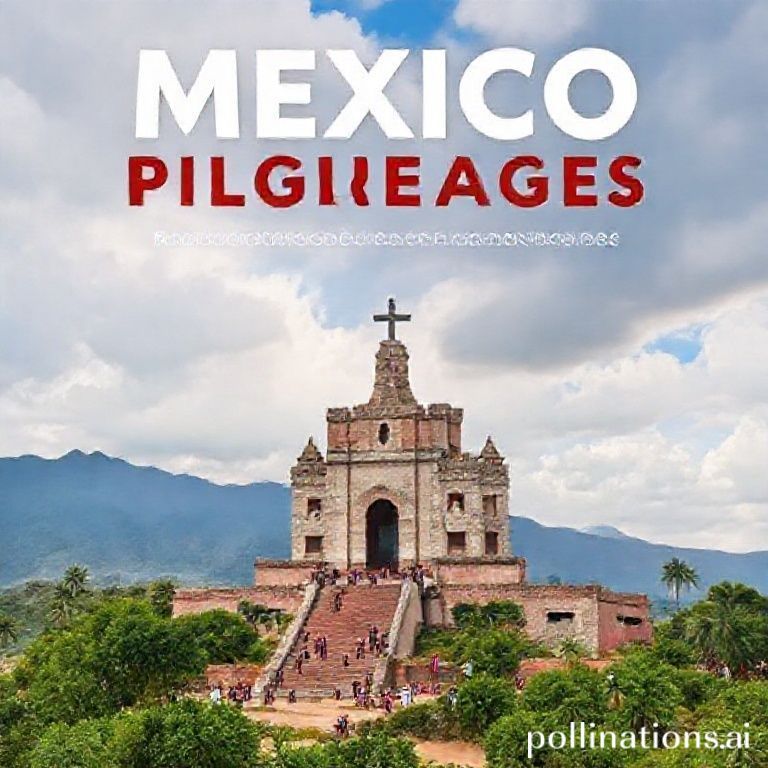Mexico, a land steeped in history and vibrant culture, is also a deeply spiritual place. For centuries, pilgrimages have been an integral part of Mexican life, weaving together indigenous beliefs and Catholic traditions. These journeys are more than just physical treks; they are powerful expressions of faith, devotion, and community, offering a unique glimpse into the soul of Mexico.
Whether you are a seasoned traveler or simply curious about different cultures, exploring the pilgrimage routes of Mexico can be a profoundly moving experience. This article will delve into some of the most significant pilgrimages, uncovering their historical roots, the traditions that surround them, and the spiritual significance they hold for millions of Mexicans.
The Significance of Pilgrimages in Mexican Culture
Pilgrimages in Mexico are far more than just religious tourism. They represent a deep-seated connection to the sacred, a way to seek blessings, fulfill vows, or simply express gratitude. The act of undertaking a pilgrimage often involves sacrifice, endurance, and a profound sense of community, as pilgrims travel together, sharing stories, songs, and support.
Many of Mexico’s pilgrimage sites are associated with apparitions of the Virgin Mary or other significant religious figures. These sites have become centers of devotion, attracting millions of visitors each year, particularly during important feast days.
Popular Pilgrimage Routes in Mexico
Mexico boasts numerous pilgrimage sites, each with its own unique history and traditions. Here are a few of the most popular and significant:
Basilica of Our Lady of Guadalupe, Mexico City
Without a doubt, the Basilica of Our Lady of Guadalupe is the most visited Catholic pilgrimage site in the world. Located in Mexico City, it commemorates the apparition of the Virgin Mary to Saint Juan Diego in 1531. Millions of pilgrims flock to the Basilica each year, especially on December 12th, the Feast Day of Our Lady of Guadalupe, to pay homage to the patron saint of Mexico.
- The original basilica, built in the 17th century, still stands and is leaning due to the soft ground.
- The modern basilica, completed in 1976, was designed to accommodate the massive crowds.
- Pilgrims often walk or crawl on their knees for the last stretch to the Basilica as an act of devotion.
San Juan de los Lagos, Jalisco
San Juan de los Lagos is another important pilgrimage destination, famous for its image of the Virgin of San Juan de los Lagos. This small wooden statue is believed to have miraculous powers, and pilgrims travel from all over Mexico and beyond to seek her intercession, particularly for healing and family well-being.
Chalma, State of Mexico
Chalma is a unique pilgrimage site that blends indigenous and Catholic traditions. Before the arrival of the Spanish, the area was a sacred site for the worship of a local deity. After the Spanish conquest, the site was transformed into a Catholic pilgrimage destination dedicated to the Lord of Chalma.
- Pilgrims often bathe in the sacred waters of the nearby river as a purification ritual.
- Traditional dances and music are an integral part of the pilgrimage experience in Chalma.
- The pilgrimage to Chalma often involves a symbolic “crossing over” from the secular world to the sacred realm.
Cristo Rey, Guanajuato
Perched atop Cubilete Mountain in Guanajuato, the Cristo Rey monument is a powerful symbol of faith and national identity. Pilgrims climb the mountain to reach the monument, offering prayers and seeking blessings. The site is particularly popular during the Feast of Christ the King in November.
Traditions and Rituals of Mexican Pilgrimages
Mexican pilgrimages are rich in traditions and rituals, reflecting the unique blend of indigenous and Catholic beliefs. Some common practices include:
- Walking or cycling long distances: The physical journey itself is considered an act of devotion and sacrifice.
- Singing hymns and reciting prayers: Music and prayer play a central role in creating a communal and spiritual atmosphere.
- Offering candles, flowers, and other gifts: These offerings are symbols of gratitude and devotion to the saint or religious figure.
- Participating in religious ceremonies and masses: These ceremonies provide an opportunity for spiritual reflection and communal worship.
- Sharing food and resources: Pilgrimages are often characterized by a spirit of generosity and mutual support among pilgrims.
Conclusion
Pilgrimages in Mexico are a powerful testament to the enduring faith and rich cultural heritage of the Mexican people. These sacred journeys offer a unique opportunity to witness the devotion, resilience, and community spirit that define Mexican culture. Whether you are drawn to the historical significance of the Basilica of Guadalupe, the healing powers of San Juan de los Lagos, or the blended traditions of Chalma, exploring the pilgrimage routes of Mexico is sure to be an unforgettable experience.
Interested in experiencing Mexican culture firsthand? Share this article with your friends and start planning your adventure today!
IMAGE: A wide-angle, vibrant photograph capturing a procession of pilgrims walking towards the Basilica of Our Lady of Guadalupe in Mexico City. The foreground shows a diverse group of people, young and old, some carrying candles and religious banners. The Basilica stands majestically in the background, bathed in warm sunlight. The sky is a clear blue with a few soft clouds. The overall mood is one of devotion, hope, and community. The style is realistic and documentary-like.


